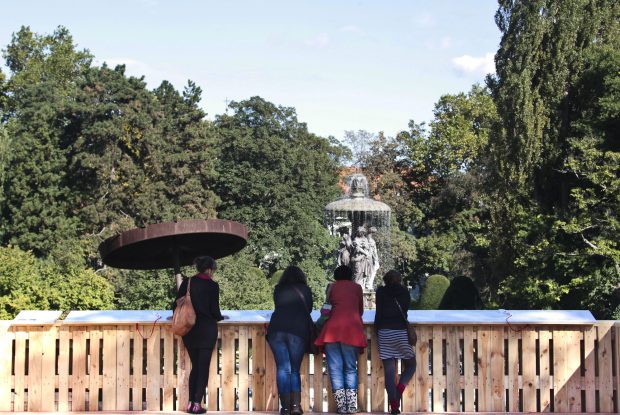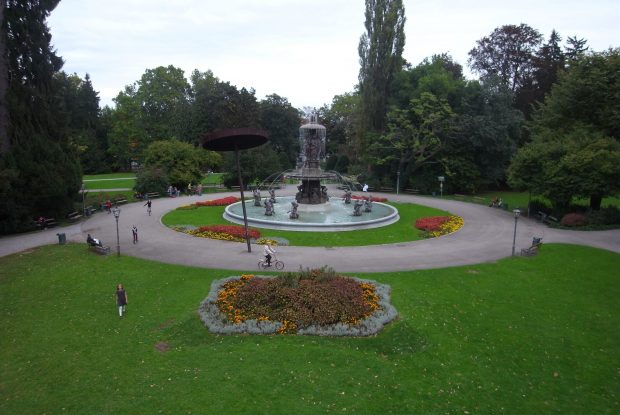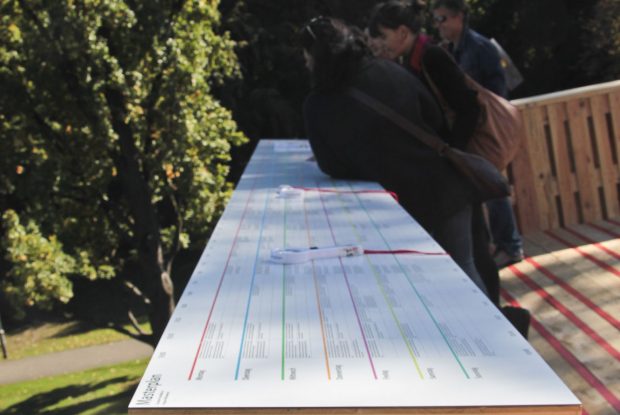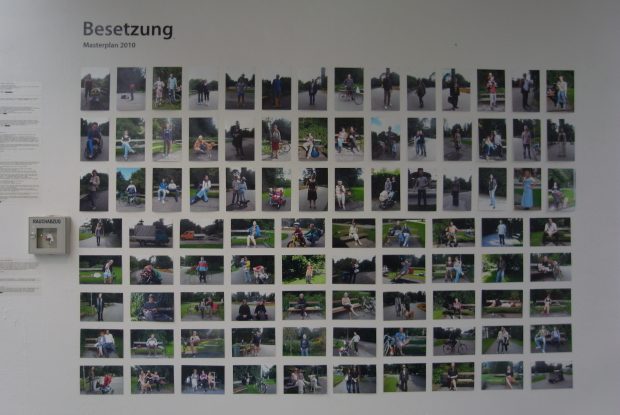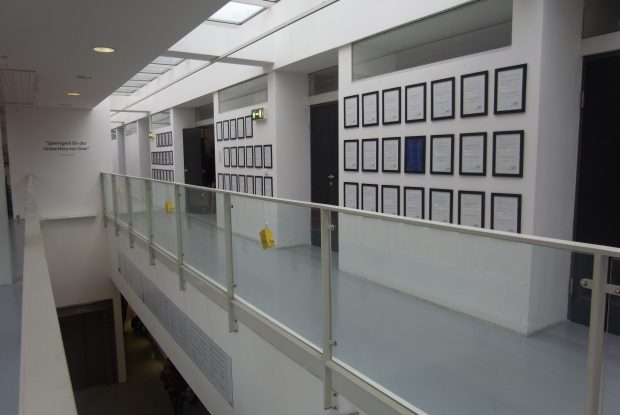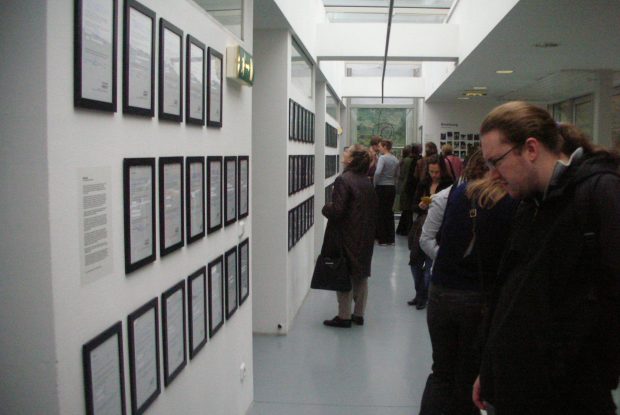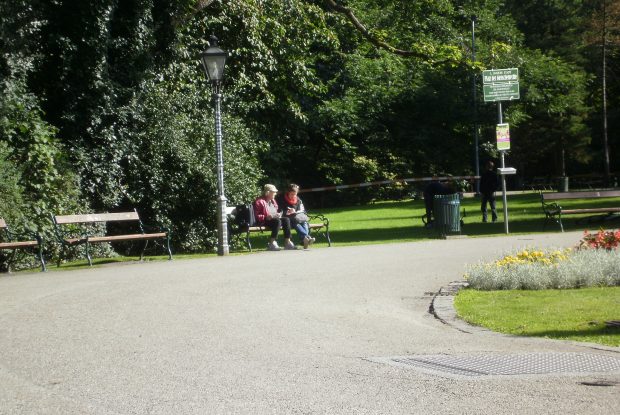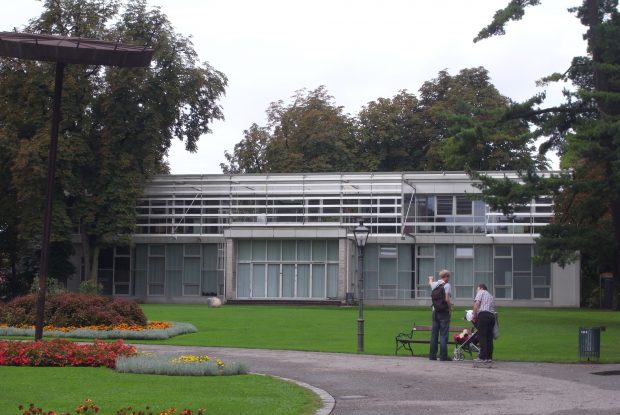Photos: Wolfgang Silveri / Susanne Kudielka
Masterplan was an intervention commissioned by the steirischer herbst in 2010, while another ‘Masterplan’ was being developed by the city of Graz, aiming to “lay down the rules of the game for the green heart of Graz” (PR brochure).
Each year the steirischer herbst relocates to a new location in Graz. In 2010 the festival moved into the Forum im Stadtpark, and the Austrian collective Feld72 were invited to design the festival headquarters, a temporary architectural intervention that would respond to both the existing physicality of the site and the dramaturgical framework of the steirischer herbst. The final design incorporated a grandstand of euro-pallets that protruded out from the existing building, topped by a large balcony, or viewing platform, which overlooked the adjacent ‘Platz der Menschenrechte’. The distance between the park and the balcony created an audience/performer relationship and transformed the space into a stage. The festival visitor on the balcony automatically became the watcher, and the park visitor below became the watched.
How could we subvert the voyeurism and hierarchy of this situation? How could we both sensitise and manipulate the gaze of the watcher? We decided to play a trick. We would describe ourselves as experts of the city park, field researchers who have spent many weeks meticulously documenting and mapping the daily sequences of events that unfold around the fountain of the Platz der Menschenrechte, and suggest that certain patterns and routines have emerged from this process of observation.
These so-called findings were then transferred onto a plaque, which was displayed on the balcony of the festival centre; a diagram of the every-day that described what would happen, when and where. For example we would write, “A young bearded man comes with his bicycle (a blue racer) every Friday at about 10:15/10:30am. He prefers to sit in the shade and sometimes takes his shoes off if the weather is nice”, or that “Every day at about 11am, a lady with blonde hair cycles past the fountain towards the University. She usually has a bunch of flowers in the wicker basket of her golden bicycle”.
Festival visitors were invited to compare our research with the live events that were taking place in the park below. All of the events detailed on the plaque would take place at exactly the right time in the park, not because we had discovered every-day routines, but because all of those described on the plaque were part of a performance, park-performers who were working under contract to fake the every-day. The every-day became a performance, and a performance became the every-day.
Our process began by watching the activities of park-users around the Platz der Menschenrechte (readers, sleepers, dog-walkers, mothers, beer drinkers, etc), and asking selected individuals if they would like to repeat what we had seen during the first week of the steirischer herbst festival. Contracts were then made with those who wanted to take part, outlining their commitments as part of our ensemble, and the amount of money they would receive for their performance. Eventually we had a cast consisting of 125 adults, 5 teenagers, 6 children, 9 babies, and 8 dogs!
After a week of performing the every-day (a durational performance lasting 68 hours), during which the project was continuously publicised as a form of field research, we presented all of the completed contracts as part of an exhibition at the festival centre, revealing the truth behind the process and that the reality was not as it seemed.
Masterplan presented an opportunity to play with the expectations of our audience, the viewer, to manipulate existing notions of every-day park-life in Graz. The faking and performing of the every-day removed the hierarchy that had been created between the viewer on the balcony and the park-users below, as the watched were able to take control of the situation. By consciously perceiving oneself as a performer, and ones actions as a performance, the presence of an audience, observer or voyeur were both legitimised and neutralised.
In many ways the project was a form of field-research, not one that took place before the festival as presumed, rather one that took place during the festival. How did the project affect the way each participant relates to both the park and the other inhabitants of the site, given that nobody knew who else was taking part, and who wasn’t? Do people behave differently when they are performing the every-day? Is it theoretically or visually possible to differentiate between the ‘actors/performers’ and other park users? Do their actions remain part of the every-day because they are not professional actors? What makes a performance a performance and the every-day the every-day? Can the every-day be authentic? Can it be faked?
Some of the most unusual and unique happenings that took place around the Platz der Menschenrechte, a man dressed as a tomato, a group of ladies holding a laughing event, or a women who washes her clothes in the fountain, were not composed by us.
We would like to thank all those who took part for making this intervention possible, the steirischer herbst for your support and trust, and of course the lovely Austrian weather.
Links
Project publication (German)
